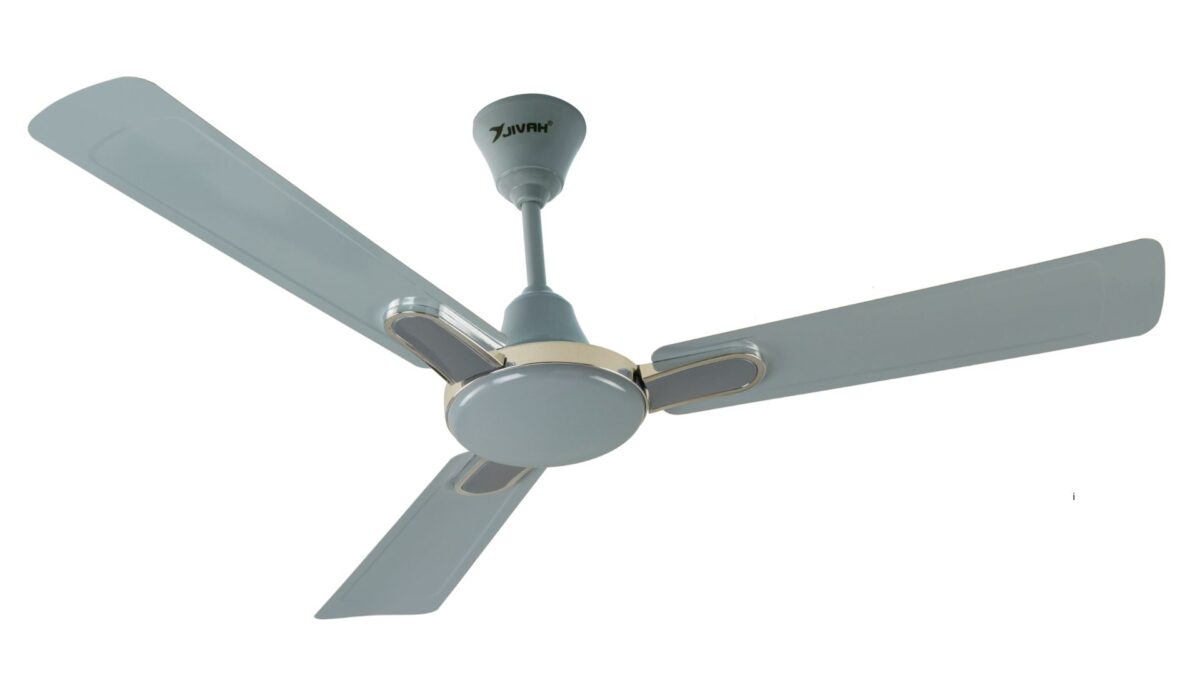Most ceiling fans use a 2.5 µF to 3.5 µF motor run capacitor (typically 440V AC) to ensure smooth startup and stable rotation. These capacitors create a phase shift in the motor’s winding, enabling consistent performance. The most common rating is a 2.5 µF, 440V capacitor—though it may vary based on the fan model.
Why Are Capacitors Essential in Ceiling Fans?
Ceiling fans use single-phase induction motors, which cannot start on their own. A motor run capacitor is essential to generate the initial phase shift, providing the torque needed to start the motor.
Without a capacitor:
- The fan may hum but not spin.
- Speed may fluctuate or remain low.
- The motor might overheat or fail completely.
Read More: https://www.jivah.com/which-type-of-motor-is-used-in-ceiling-fans/
Ceiling Fan Capacitor Ratings (Quick Reference)
| Capacitor (µF) | Ideal For |
|---|---|
| 1.5 µF – 2 µF | Small, energy-efficient fans |
| 2.25 µF – 2.5 µF | Standard residential fans |
| 3.15 µF – 3.5 µF | High-speed or premium ceiling fans |
Always consult your fan’s manual or motor label before choosing a replacement. An incorrect µF rating can reduce motor efficiency or cause long-term damage.
Best Types of Capacitors for Ceiling Fans
1. Polypropylene Film Capacitors
- Long life, heat-resistant, low energy loss
- Slightly costlier than other types
- Common in most modern fans for reliability
2. Dry Motor Run Capacitors
- Compact and durable
- Widely used in standard ceiling fans
3. Oil-Filled Capacitors
- Suitable for heavy-duty or industrial fans
- Bulkier and rarely used in household fans
5 Signs Your Fan Capacitor Needs Replacement
- Fan doesn’t start (only hums)
- Fan rotates slowly or inconsistently
- The motor gets excessively hot
- The capacitor is swollen or leaking
- A burnt smell is present near the motor
Replacing a faulty capacitor is a simple, low-cost fix—usually under ₹200.
Want to know the average lifespan of a fan capacitor before it fails?
Read this guide on how long fan capacitors last.
Choosing the Right Replacement Capacitor
- Match the microfarad (µF) rating exactly, or within a 10% range
- Voltage must match or exceed the original (e.g., 440V or 450V)
- Avoid using a much higher µF rating than specified
Example:
- Safe: Replacing a 2.25 µF with a 2.5 µF capacitor
- Risky: Replacing a 2.5 µF with a 3.5 µF may overheat the motor
FAQs
Can we use a 3.15 µF capacitor in a ceiling fan?
→ Not recommended. It may temporarily boost speed but can overheat motors not designed for that value.
Which capacitor increases fan speed?
→ A higher µF capacitor increases torque and may raise speed briefly—but risks long-term motor damage.
Can I use a 2.5 µF capacitor instead of 2.25 µF?
→ Yes. This is within the safe ±10% range and is commonly done in repairs.
Does higher capacitor increase fan speed?
→ Yes, but only temporarily. A higher capacitor increases starting torque, but sustained use can overstrain the motor winding.
Final Tips for Long-Lasting Fan Performance
- Check capacitor health every 2–3 years
- Clean and lubricate fan bearings regularly
- Always disconnect power before opening or replacing any part
Need a Reliable, Long-Lasting Capacitor?
Jivah manufactures BIS-certified, performance-tested capacitors designed for ceiling fans, exhaust fans, and other appliances. Our capacitors ensure stable performance, high endurance, and safety for both household and industrial use.
👉 Browse our capacitor range today or get in touch with our experts to find the right fit for your motor application.






